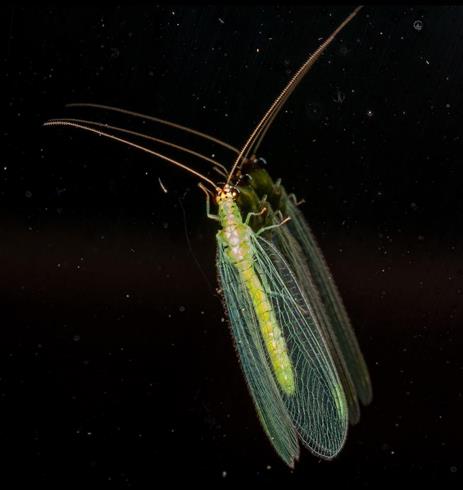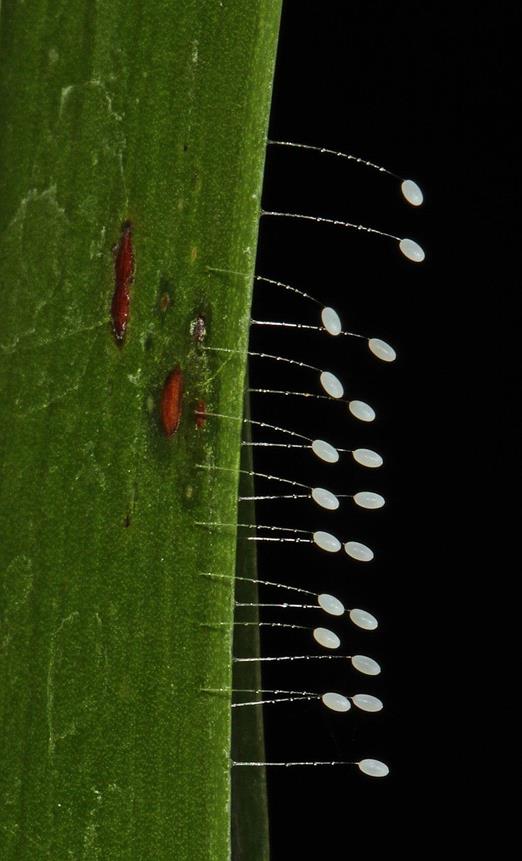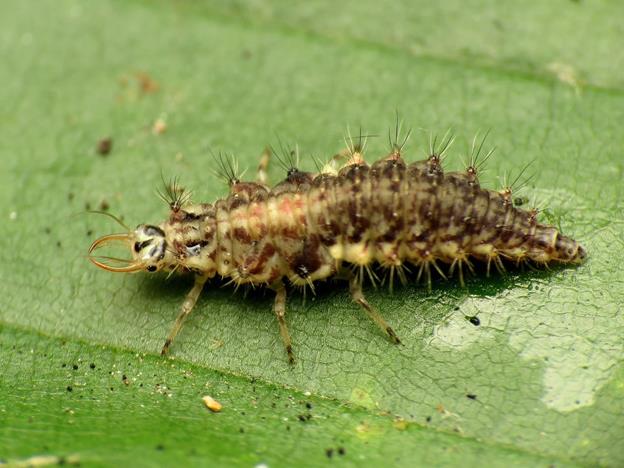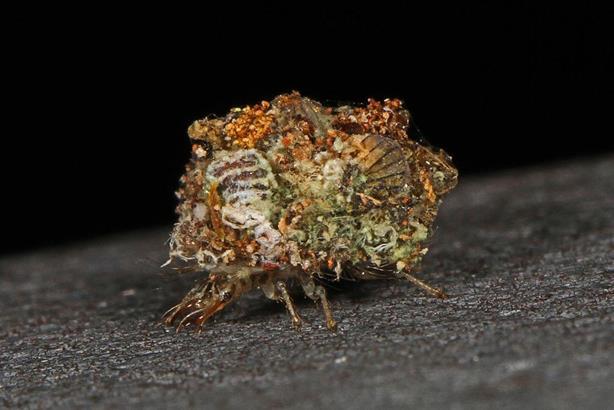
Lacewings: Beauties & Beastly Babies
By Judy Ferris, ACLT Guest Blogger
Lacewings are an insect we may have heard of but perhaps never seen. Adult Lacewings get their names from the delicate network of ‘veins‘ which characterize their wings.
Unfortunately, we see Lacewing adults only rarely because they are nocturnal. Yet, adult Lacewings are the miniature fairy princesses of the crepuscular world. Measuring about ¾ of an inch long, they have bright green bodies and golden eyes. Gowned in lacy, diaphanous wings which almost glow, they flutter in the darkness on a nightly quest for nectar, pollen, and honeydew.


Hungry bats also roam the darkness, using their sonar to detect delicate fairy princesses in flight. Amazingly, Lacewings have specialized veins in their wings that sense the ultrasonic sounds made by hunting bats. Alerted to danger, a flying Lacewing takes evasive action. It closes its wings, making a smaller sonar image, and sinks to the ground out of danger.
During her lifetime, which may last 4-6 weeks, a female Lacewing lays up to 200 eggs. They are placed on the undersides of leaves, preferably near a burgeoning colony of aphids or other soft, yummy pests.
Each egg is cleverly placed at the end of a slender stalk which is coated with ant repellent. The stalks may also prevent newly hatched lacewing larvae from eating their unhatched siblings!
While adult lacewings are gentle and fairy-like, Lacewing larvae are the exact opposite! Known as Aphid Lions due to their voracious feeding habits, Lacewing larvae are shaped rather like alligators.
The feisty babies are about ½” long. Note the no-nonsense feeding apparatus on the head. The large, curving mouth parts (known as maxillae) have hollow grooves which serve as fluid conduits. Although Aphid Lions have eyes, their senses are very weak. Instead of spotting prey visually, they swing their upper bodies back and forth like a rampaging Attila the Hun, until they crash into something edible. Grasping the unsuspecting victim with their maxillae, they inject potent toxins into its body. So powerful are these chemicals, that they can dissolve the insides of an aphid in 90 seconds! Let the feasting begin! Body fluids from the aphid are sucked out via the maxillae. As the withered husk of the aphid runs out of fluid, let there be no doubt, they are good to the last drop! The Aphid Lion, with prey gripped in its curving ‘jaws‘, tilts its head back and shakes the carcass to savor every ounce of sugary goodness.


But wait! There‘s more to this story! An Aphid Lion, alone and unprotected, is a juicy target for insect or bird predators. Thus, as soon as they leave the egg, some Lacewing larvae begin collecting items to form a shield‘ on their backs. This protective cover may consist of spent egg cases, the shed skins of molting larva, or the withered bodies of the Aphid Lion‘s victims. Over time a significant pile of detritus accumulates atop the larva; the perfect camouflage for a tiny, but fearsome predator.
Once the larvae matures, it spins a cocoon; incorporating a shield of dead insects and other debris. Here in Maryland, Lacewings overwinter in these cozy cocoons; surrounded by molted body parts of relatives and the empty husks of victims. In spring, a fully formed-adult Lacewing with translucent wings emerges. A beastly baby no more!
For a fascinating peek into the lives of adult Lacewings and Aphid Lions in action, be sure to check out the short video below.
Aphid Lions typically eat about 200 aphids or other pests per week during their 2-3 week developmental cycle. In addition to aphids, the larvae also eat mites, insect eggs, and fearlessly wade in to attack much larger prey such as caterpillars as well. They are valuable additions to any garden and are even used for large-scale pest control of some crops. Lacewing eggs, larvae, and adults are all available for purchase online for use as biological pest control. Gardeners can attract Lacewings by using certain plants and tolerating beneficial weeds; Asters, Cosmos, Sunflowers, Dill, and Dandelions.
My magnifying glass is at the ready as I almost look forward to discovering aphids in my garden this spring. Can‘t wait to see what sort of insect mayhem transpires!